Ancient Artifacts and Mysteries: The Fascinating Tomb of Marquis Yi of Zeng
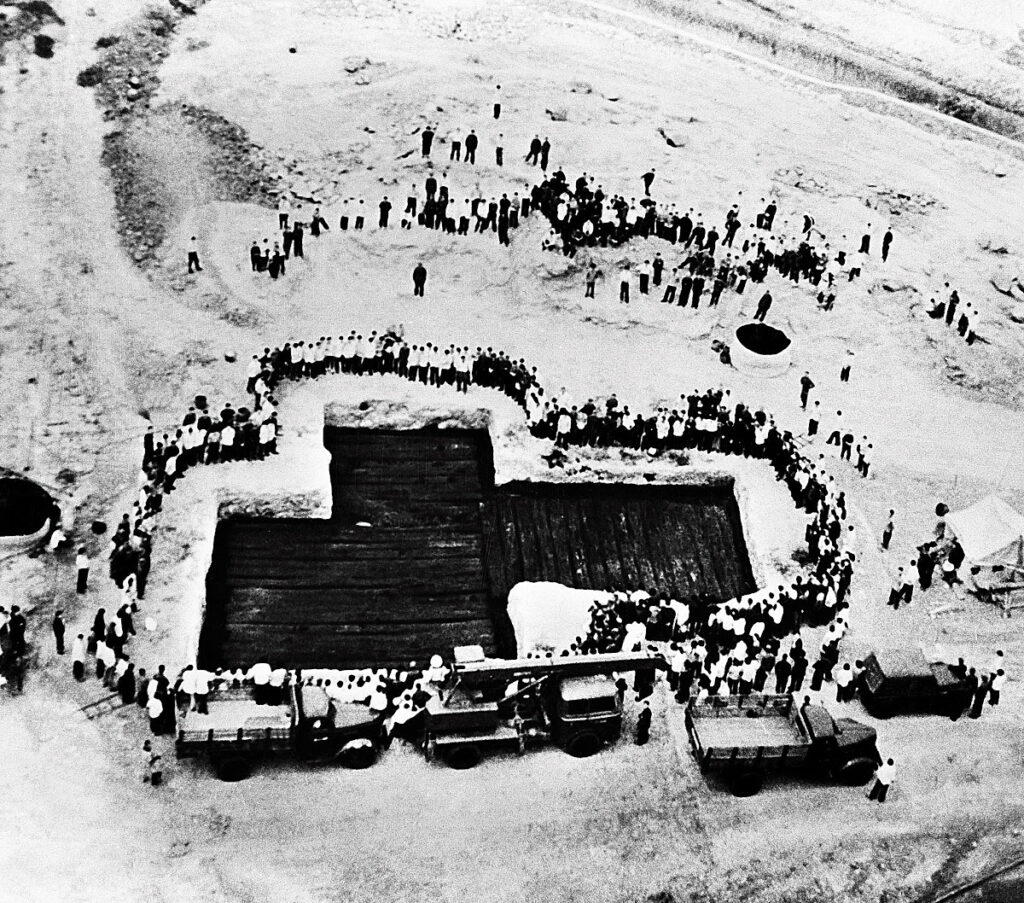
An Essential Guide to Visiting Tomb Of Marquis Yi Of Zeng
In This Guide
- An Essential Guide to Visiting Tomb Of Marquis Yi Of Zeng
- The Rich History and Legends of Tomb Of Marquis Yi Of Zeng
- Main Highlights: What You Absolutely Can’t Miss
- Planning Your Visit: A Practical Guide
- Tickets: Prices, Booking, and Tips
- How to Get There: A Complete Transportation Guide
- Local Cuisine and Accommodation Nearby
- Frequently Asked Questions
- Final Thoughts on Your Trip
The Tomb of Marquis Yi of Zeng, tucked away in the serene landscape of Suizhou, Hubei province, is a mesmerizing portal into ancient Chinese history. Dated to 433 BC, this archaeological gem is not merely a burial site; it is a testament to the opulence and complexity of life during the late Spring and Autumn period and the early Warring States period in China. Discovered accidentally in 1977, the tomb boasts an astonishing collection of over 15,000 artifacts, ranging from exquisite jade and gold items to elaborate bronze vessels and an unparalleled ensemble of musical instruments.
As you prepare to explore this remarkable site, imagine stepping into the world of Marquis Yi, a ruler from the once-powerful Zeng state. The tomb reflects his status and ambition, filled with items crafted for both ritual significance and personal pleasure, including a stunning set of 64 bianzhong bells that evoke the sounds of ancient ceremonies. Here, every artifact tells a story, intricately woven into the fabric of a society that revered both life and death.
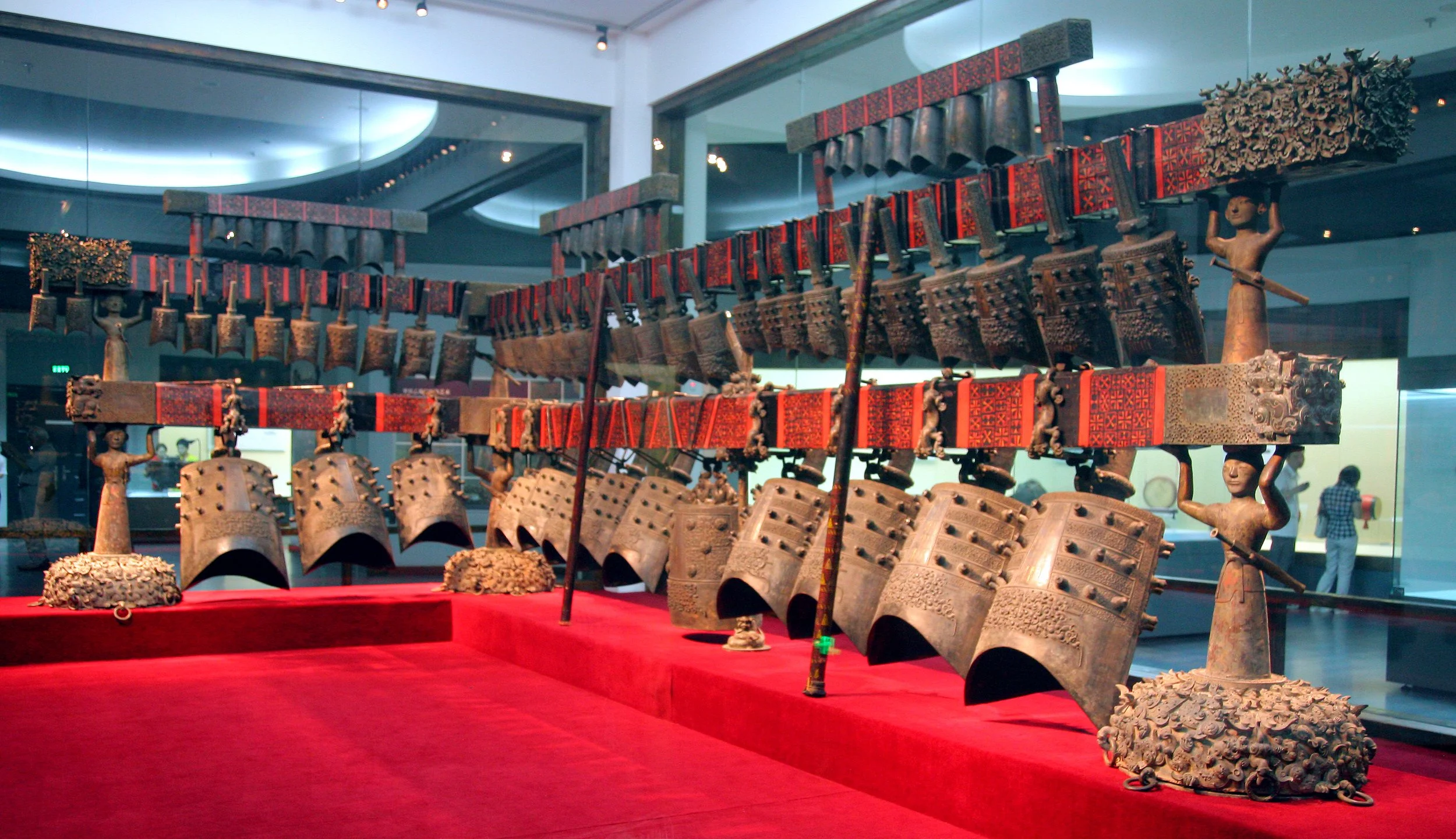
Tomb Of Marquis Yi Of Zeng.
Visiting the Tomb of Marquis Yi of Zeng is not just an educational experience; it invites you to contemplate the legacies of power, artistry, and cultural practices that have shaped Chinese civilization. Prepare to be enthralled by the elegance of the burial chambers and the depth of history that defines this site, making it a must-visit for anyone passionate about history and culture.
The Rich History and Legends of Tomb Of Marquis Yi Of Zeng
The Tomb of Marquis Yi of Zeng, unearthed in 1977, is a remarkable archaeological treasure that offers a fascinating glimpse into the cultural and historical tapestry of ancient China. Located in Suizhou, Hubei province, this tomb belongs to the Marquis Yi, a noble from the relatively obscure Zeng state during the tumultuous Warring States period (475–221 BC).
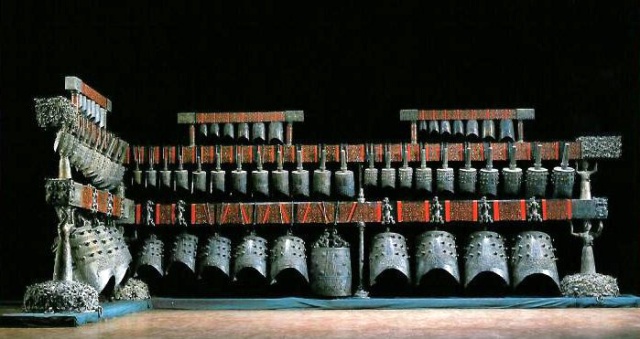
Tomb Of Marquis Yi Of Zeng.
A Window into the Past
Dating back to around 433 BC, the tomb is significant not only for its well-preserved artifacts but also for the insights it provides into the social hierarchy and burial customs of the era. Unlike many other royal tombs, which have been ravaged by time and looters, the Tomb of Marquis Yi was found intact, boasting a staggering collection of over 15,000 items. This includes luxurious bronze vessels, exquisite jade and gold artifacts, and an extraordinary ensemble of musical instruments, particularly the famed set of 64 bianzhong bells.
The construction of the tomb itself is a marvel, reflecting a desire to replicate the living quarters of the time. It is organized into four distinct chambers, each designed for specific functions. The central chamber, the largest, housed the ceremonial musical instruments, while the other chambers contained the Marquis’s remains, along with those of several women, possibly wives or concubines, illustrating the social customs surrounding death and the afterlife.
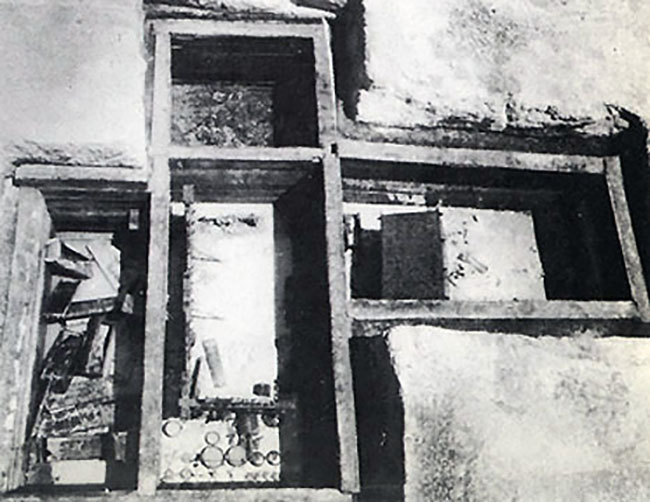
Tomb Of Marquis Yi Of Zeng.
The Legacy of Marquis Yi
Marquis Yi’s opulent burial reflects his ambition and status within a shifting political landscape. The Warring States period was marked by increasing fragmentation of power, with local lords engaging in fierce competition for prestige. The lavish contents of the tomb, particularly the collection of ritual bronzes typically reserved for Zhou kings, suggest that Marquis Yi sought to elevate his standing amid such turmoil.
The intricacy of the artifacts found within the tomb offers invaluable insights into the artistic and cultural practices of the time. The bianzhong, mounted on a grand framework, was not merely a musical instrument but a testament to the sophistication of ancient Chinese craftsmanship. These bells, capable of producing two distinct tones, were integral to ceremonial music, thus underscoring the importance of music in rituals and state functions.
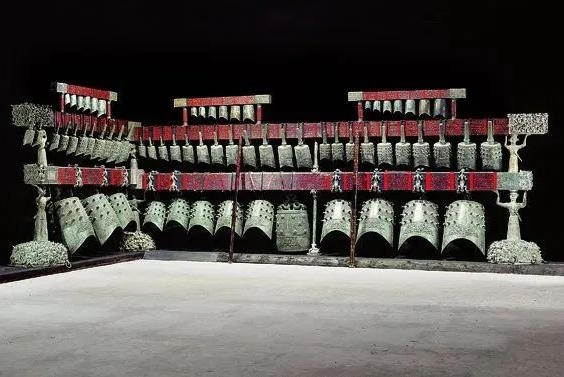
Tomb Of Marquis Yi Of Zeng.
Legends and Cultural Significance
The tomb of Marquis Yi is steeped in legends and cultural significance. It is often viewed as a microcosm of the grandeur and complexities of ancient Chinese society. The extensive bronze inscriptions discovered alongside the artifacts recount not only the life of Marquis Yi but also the customs surrounding his funeral, including the notable attendance of dignitaries from various states.
The discovery of the tomb has sparked intrigue and fascination, leading to numerous scholarly interpretations of its contents. It has become a vital reference point for understanding the evolution of Chinese funerary practices, the significance of music in ancient rituals, and the socio-political dynamics of the Warring States period.
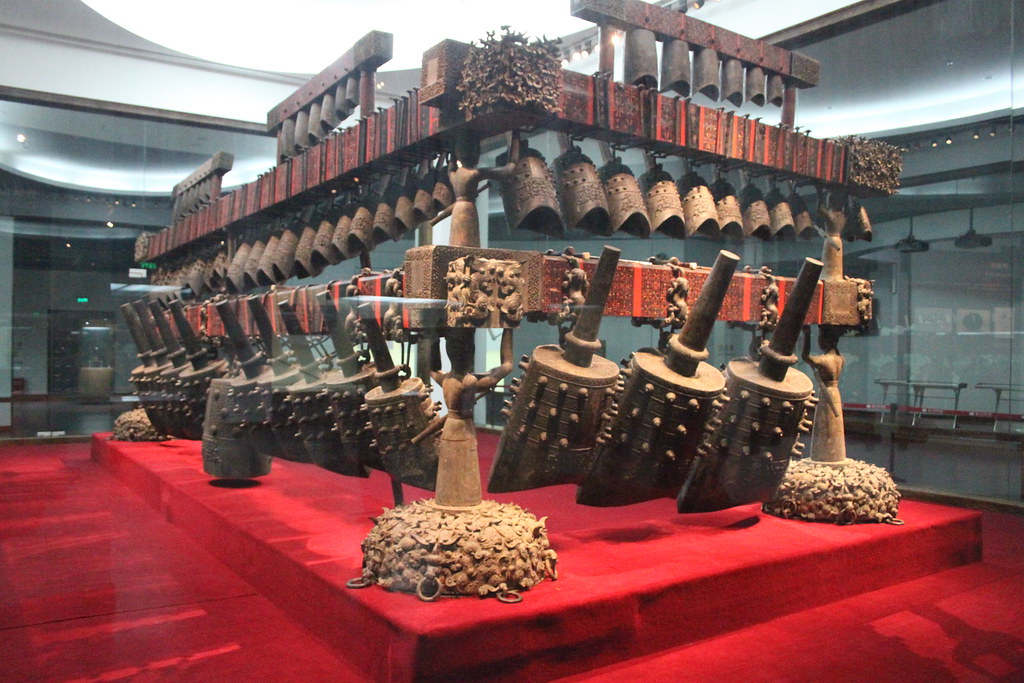
Tomb Of Marquis Yi Of Zeng.
As visitors explore this remarkable site, they are not merely witnessing the remnants of a burial; they are stepping into a rich narrative that intertwines ambition, artistry, and the enduring human desire to secure one’s legacy beyond death. The Tomb of Marquis Yi of Zeng stands as a beacon of ancient Chinese cultural heritage, inviting travelers to delve deeper into the stories of those who shaped its history.
Main Highlights: What You Absolutely Can’t Miss
Main Highlights: What You Absolutely Can’t Miss at the Tomb of Marquis Yi of Zeng
Visiting the Tomb of Marquis Yi of Zeng is like stepping back in time to witness the opulence and cultural richness of ancient China. This archaeological marvel, located in Hubei Province, is a treasure trove of history and artistry. Here are the key highlights that you absolutely cannot miss:
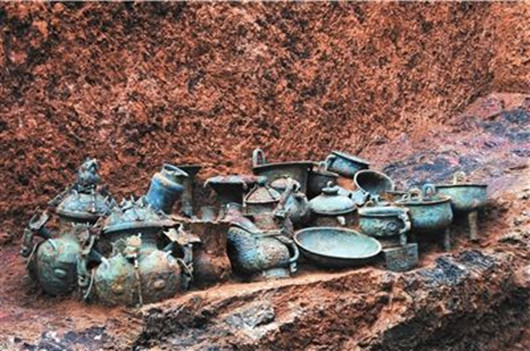
Tomb Of Marquis Yi Of Zeng.
1. The Magnificent Tomb Structure
The tomb itself is a remarkable architectural feat, divided into four distinct chambers, echoing the layout of a palace. Originally buried over 40 feet underground, it exemplifies the ancient Chinese desire to replicate living spaces for the deceased. Each chamber served a unique purpose:
– Central Chamber: This largest section housed a breathtaking collection of 64 bianzhong bells, showcasing the musical sophistication of the era.
– Eastern Chamber: The burial site of Marquis Yi, featuring a wooden lacquer coffin surrounded by the remains of eight women, hinting at the intricate social customs of the time.
– Western Chamber: Containing the remains of thirteen other women, this chamber further emphasizes the complex burial traditions tied to status and wealth.
– Northern Chamber: The smallest chamber, which housed military artifacts, reflecting the martial culture of the period.
2. The Legendary Bianzhong Bells
The highlight of the tomb is undoubtedly the 64 bianzhong bells, crafted to produce distinct two-toned sounds. These bells were not only musical instruments but also a symbol of power and prestige. The elaborate framework required a team of five to play, showcasing the sophisticated musical practices of the Warring States period. The bells also bear inscriptions that provide insights into the relationships among the musical standards of the Zeng, Chu, and Zhou states.
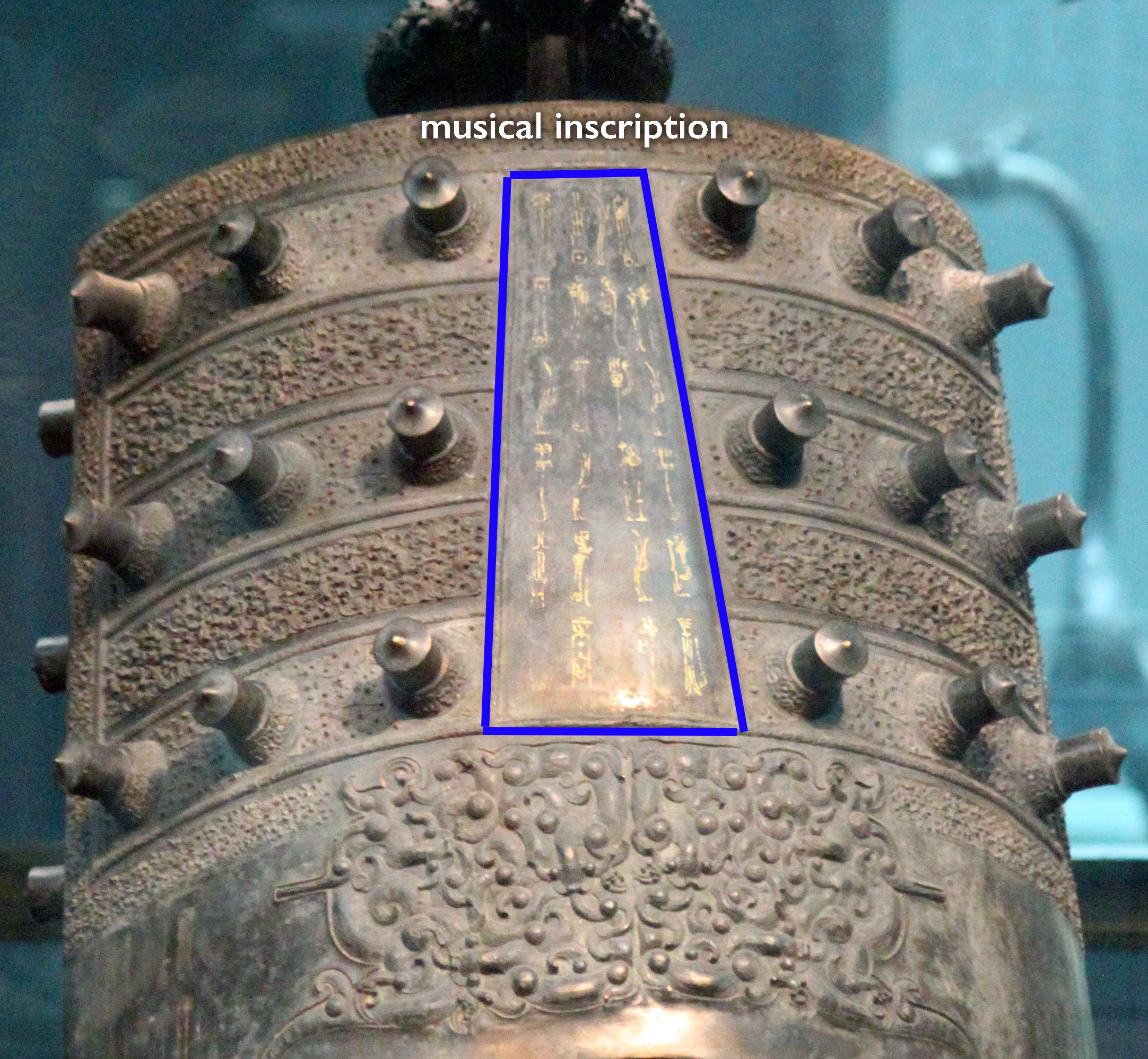
Tomb Of Marquis Yi Of Zeng.
3. Ritual Bronze Vessels
The tomb contained one of the largest collections of ritual bronze vessels from pre-imperial China, including:
– Zun and Ding vessels: Used for ceremonial purposes, these intricately designed pieces reflect the artistic capabilities of the time.
– Pan wine vessels: Unique in their construction, these two-part vessels highlight the luxurious lifestyle of Marquis Yi.
– Matching sets: The tomb featured numerous matching vessels, a testament to the wealth and status of the individual buried within.
4. An Array of Musical Instruments
Beyond the bianzhong, the tomb also housed various other musical instruments, including:
– Stone chimes and flutes: Crafted with exceptional artistry, these instruments showcase the importance of music in ritual practices.
– String instruments: Including the se and qin, which were central to the musical traditions of the time.
5. Intriguing Artifacts and Daily Life Items
The tomb offers a glimpse into the daily life and customs of the time through its extensive collection of artifacts:
– Weaponry: A trove of artifacts, including arrowheads and dagger-axes, provides insight into the military practices of the era.
– Personal items: The discovery of jade combs and bronze food containers reveals the personal tastes and daily practices of Marquis Yi and his court.
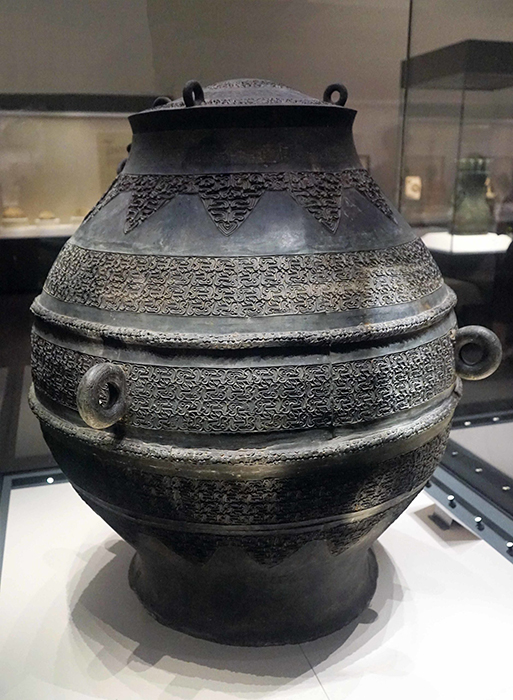
Tomb Of Marquis Yi Of Zeng.
6. Bamboo Slips and Inscriptions
One of the tomb’s most significant finds is the earliest examples of ink writing on bamboo slips, which document attendees at Marquis Yi’s funeral. These slips not only illuminate social hierarchies but also provide invaluable information on early Chinese calligraphy and administrative practices.
7. The Cultural Context
Understanding the historical context of the tomb deepens your appreciation of its significance. Marquis Yi of Zeng lived during a tumultuous period characterized by the decline of the Zhou dynasty and the rise of regional powers. His lavish burial, filled with items normally reserved for royalty, reflects both his status and the cultural dynamics of the time.
Conclusion
A visit to the Tomb of Marquis Yi of Zeng is not just a journey into an ancient burial site but an immersive experience into the rich tapestry of Chinese history and culture. From the grandeur of the tomb’s architecture to the exquisite artifacts within, this site is an essential destination for any traveler seeking to understand the complexities of ancient Chinese society. Don’t miss the opportunity to explore this extraordinary glimpse into the past!
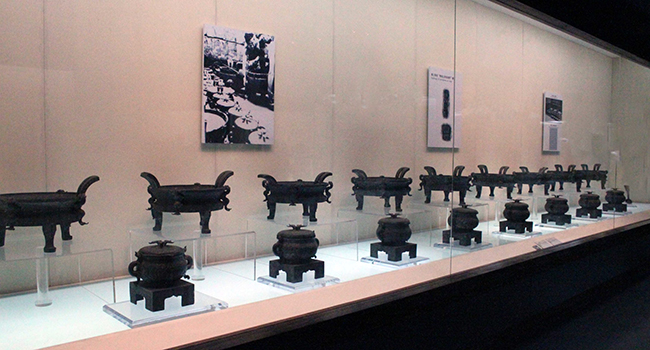
Tomb Of Marquis Yi Of Zeng.
Planning Your Visit: A Practical Guide
Discovering the Tomb of Marquis Yi of Zeng: Your Practical Guide
Visiting the Tomb of Marquis Yi of Zeng is a journey into the rich tapestry of ancient Chinese history, showcasing the opulence and cultural practices of the Warring States period. This guide provides essential information to ensure that your visit is not only enjoyable but also enriching.
Location and Accessibility
The Tomb of Marquis Yi is located in the Leigudun Community of Suizhou, Hubei Province. Here’s how to reach this historical site:
- By Air: The nearest major airport is Wuhan Tianhe International Airport, approximately 150 kilometers away. From the airport, you can take a train or bus to Suizhou.
- By Train: Suizhou has a train station with connections to major cities like Wuhan and Zhengzhou. Once in Suizhou, local buses or taxis can take you to the tomb.
- By Bus: Regular buses run from Wuhan to Suizhou. Ensure to check the latest schedules for convenience.
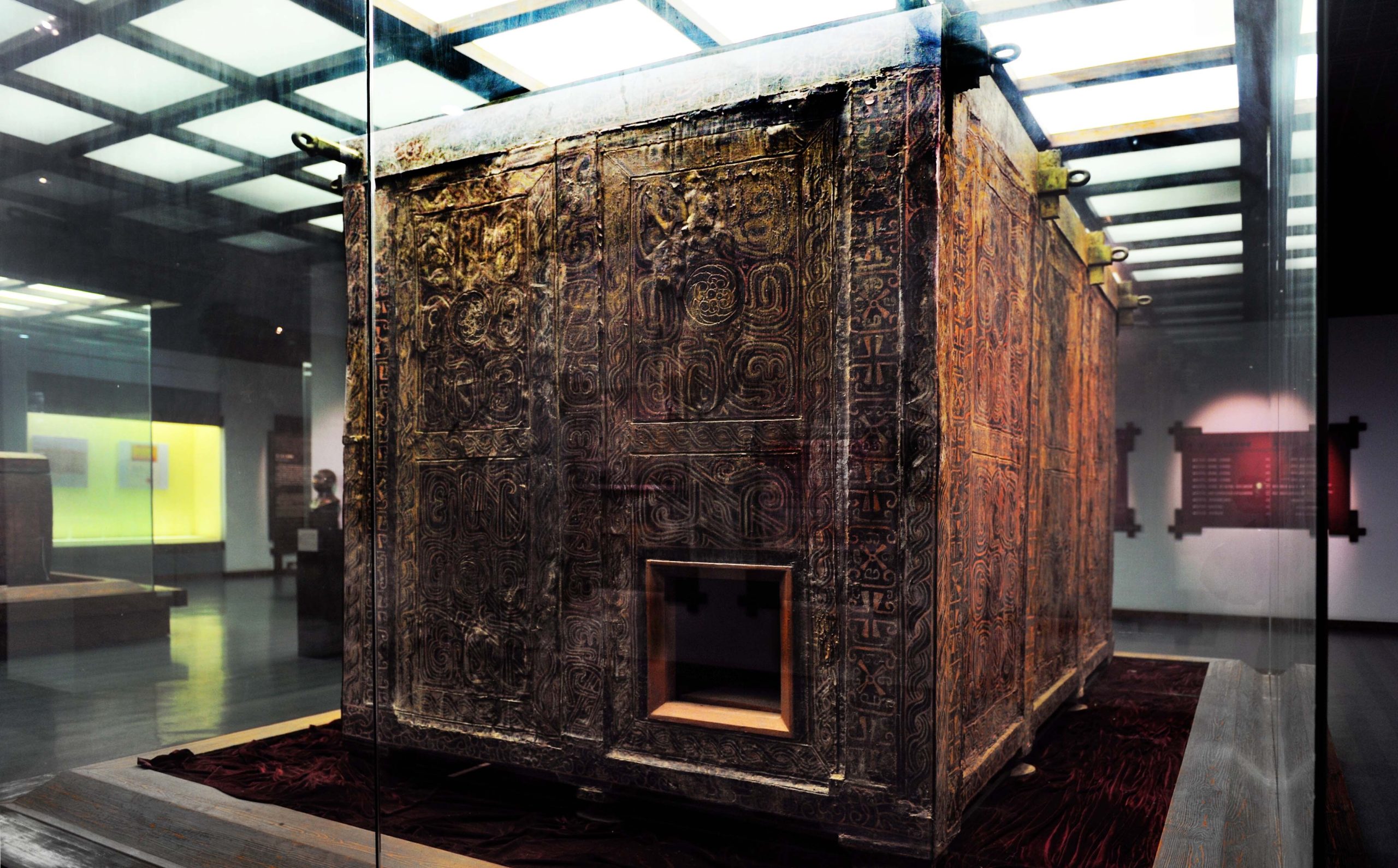
Tomb Of Marquis Yi Of Zeng.
Opening Hours
The tomb is generally open to visitors from 8:30 AM to 5:00 PM, but it’s advisable to check the local schedules or any seasonal changes prior to your visit.
Admission Fees
While fees may vary, expect to pay a small entrance fee to access the site. It’s best to carry some cash, as payment methods may be limited.
What to Expect
The Tomb of Marquis Yi of Zeng is not just an archaeological site; it’s a glimpse into ancient rituals and a reflection of social hierarchies. Here’s what you can look forward to:
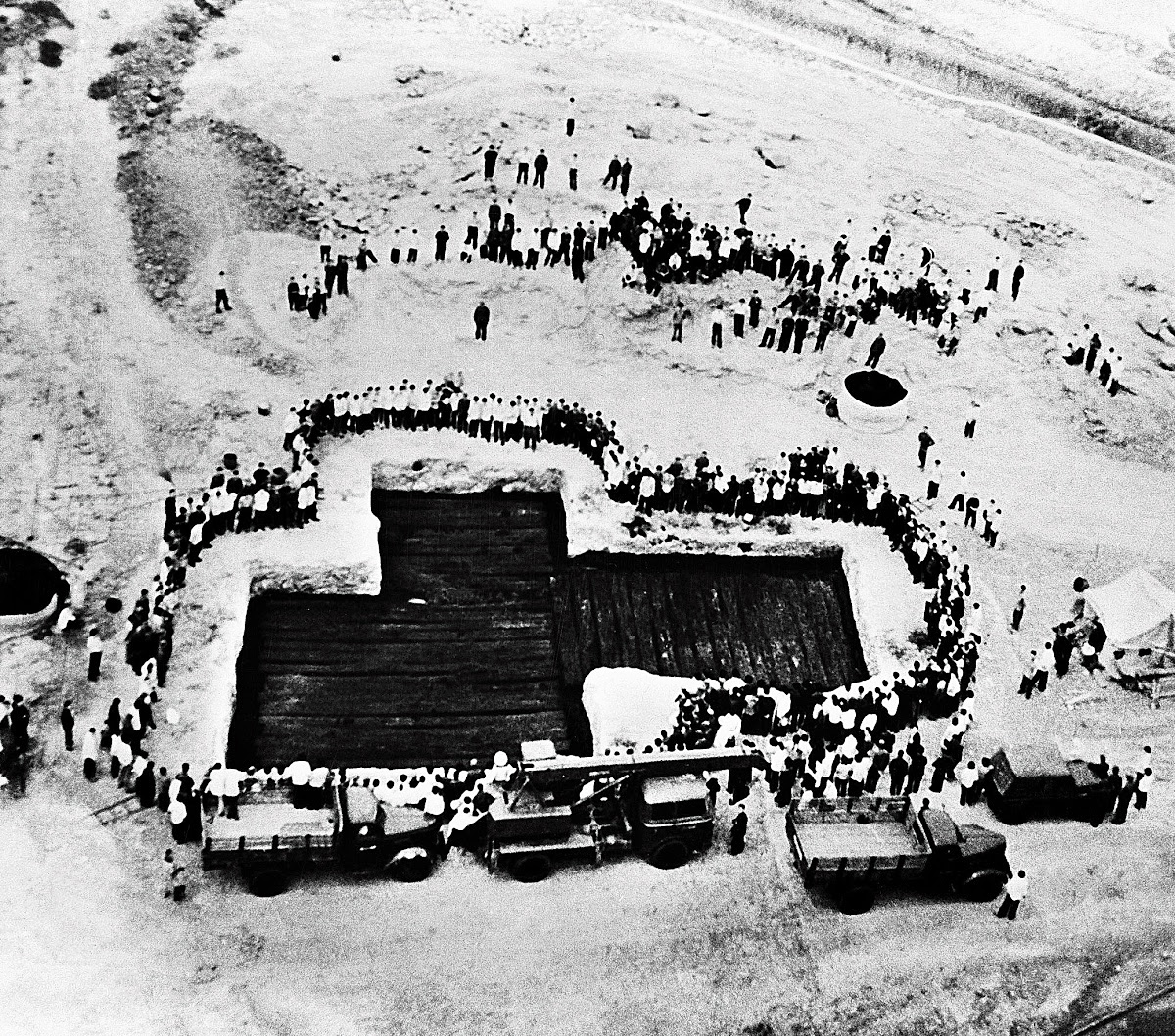
Tomb Of Marquis Yi Of Zeng.
- Impressive Artifacts: The tomb contains over 15,000 items, including bronze ritual vessels, musical instruments, and luxurious jade and gold objects. The most notable are the 64 bianzhong bells, famous for their unique two-toned sound.
- Architectural Layout: The tomb’s design, replicating a palace structure, consists of four chambers, each serving distinct purposes—military artifacts, burials, and an array of musical instruments.
- Historical Significance: As one of the few intact royal tombs from ancient China, it offers invaluable insights into burial customs and the elite culture of the time.
Tips for Your Visit
-
Guided Tours: Consider joining a guided tour to gain deeper insights into the artifacts and their historical context. Many local guides are knowledgeable and can provide engaging stories about the Marquis Yi and his era.
-
Photography: While photography is allowed in many areas, be mindful of signs indicating restrictions. Capture the beauty of this historical site, but also respect its sanctity.
-
Local Cuisine: Don’t miss the chance to enjoy local Hubei cuisine. Nearby restaurants offer a variety of dishes, with specialties featuring fresh river fish and local vegetables.
-
Cultural Etiquette: Be respectful during your visit, especially in areas where worship or remembrance may be taking place. Dress modestly and maintain a quiet demeanor.
Nearby Attractions
Extend your historical exploration with visits to nearby sites:
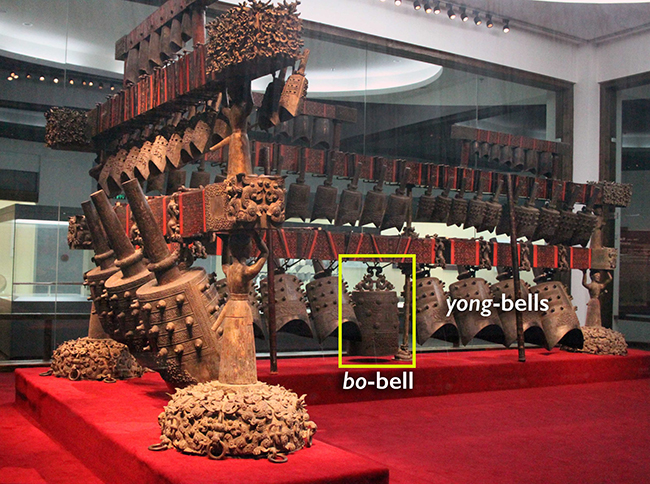
Tomb Of Marquis Yi Of Zeng.
- Hubei Provincial Museum: Located in Wuhan, this museum houses many artifacts from the Tomb of Marquis Yi and offers a broader view of Hubei’s rich history.
- Suizhou Ancient City: Discover remnants of ancient architectural marvels and traditional Chinese culture within this historic town.
Conclusion
A visit to the Tomb of Marquis Yi of Zeng is a captivating experience that deepens your understanding of ancient Chinese civilization. Plan ahead, respect the site, and immerse yourself in the rich history that awaits you. Enjoy your journey through time!
Tickets: Prices, Booking, and Tips
Visiting the Tomb of Marquis Yi of Zeng offers a unique opportunity to delve into ancient Chinese history and culture, especially for those intrigued by the opulence of the Warring States period. Before you embark on this journey to explore one of the most significant archaeological discoveries in China, it’s essential to have all the right information regarding tickets, booking, and tips for your visit.
Ticket Prices
- General Admission: Approximately ¥40 (RMB) per person.
- Discounted Tickets: Students, seniors, and groups may qualify for discounted rates, typically around ¥20 (RMB).
- Free Admission: Children under a certain age (usually 6 years) and individuals with disabilities may be granted free entry. Always check at the entrance for specific policies.
Booking Information
- On-Site Purchase: Tickets can be purchased directly at the site entrance. It’s advisable to arrive early, especially during peak tourist seasons, to avoid long queues.
- Online Booking: For those who prefer planning ahead, certain travel platforms and the official site may offer online ticketing options. This can save time and guarantee your entry on busy days.
- Guided Tours: Consider booking a guided tour, which may include the ticket price. This option often provides a more enriching experience, with insights from knowledgeable guides about the tomb’s history and artifacts.
Tips for Your Visit
- Best Time to Visit: The ideal months to visit are from April to October, when the weather is milder. Visiting on weekdays can also help you avoid crowds.
- Opening Hours: The tomb typically opens from 8:30 AM to 5:30 PM. Last entry is usually an hour before closing, so plan your visit accordingly.
- Explore Nearby Attractions: Don’t miss the Hubei Provincial Museum, located nearby, where many artifacts from the tomb are displayed. A combined visit can provide a comprehensive understanding of the era.
- Accessibility: The site is generally accessible for individuals with mobility issues, but it is advisable to check in advance for specific accommodations.
- Photography: While photography is allowed in many areas, be respectful of any signs indicating restrictions, especially near historical artifacts.
Local Transportation
- Public Transport: Local buses frequently run from Suizhou city center to the tomb site. The journey takes about 30-40 minutes.
- Taxi Services: Taxis are readily available in the area and can be a convenient option for direct transport.
- Parking: If you are driving, check for available parking spaces at the site, as they can fill up quickly during weekends and holidays.
With this information at hand, you are well-equipped to plan an unforgettable visit to the Tomb of Marquis Yi of Zeng. Immerse yourself in the rich history, and let the echoes of the past guide you through this remarkable archaeological wonder.
How to Get There: A Complete Transportation Guide
Navigating Your Way to the Tomb of Marquis Yi of Zeng
Visiting the Tomb of Marquis Yi of Zeng (曾侯乙墓) is a fascinating journey into China’s ancient history, located in Hubei Province, specifically in Suizhou City. Here’s how to make your way to this remarkable archaeological site, known for its well-preserved contents and significant contributions to our understanding of ancient Chinese culture.
Getting There by Air
1. Fly into Wuhan Tianhe International Airport (WUH)
The nearest major airport is Wuhan Tianhe International Airport, situated approximately 130 kilometers from the Tomb of Marquis Yi of Zeng. This airport connects to various international and domestic destinations, making it a convenient entry point.
2. Transportation from the Airport to Suizhou
From Wuhan, you have several options to reach Suizhou:
- By Train:
- High-Speed Train: Take a high-speed train from Wuhan Railway Station or Wuhan Wuchang Railway Station to Suizhou Railway Station. The journey takes about 1 to 1.5 hours. Trains run frequently throughout the day.
-
Standard Train: Alternatively, you can opt for a standard train, though this will take longer (approximately 2 to 3 hours).
-
By Bus:
-
Long-distance buses from Wuhan to Suizhou are available at various bus stations in Wuhan. The journey typically takes 2 to 3 hours.
-
By Taxi or Rideshare:
- If you prefer a direct route, you can book a taxi or use a rideshare app. The drive from the airport to Suizhou takes about 2 hours without heavy traffic.
Local Transportation in Suizhou
Once you arrive in Suizhou, getting to the Tomb of Marquis Yi of Zeng is straightforward:
1. Public Transportation:
– Buses: Look for local buses heading to Zengdu District. The bus system in Suizhou is extensive and can be economical, but be sure to check the routes and schedules.
2. Taxi or Rideshare:
– Taxis are widely available, and rideshare apps are also functional in the area. A taxi ride from the city center to the tomb should take around 20–30 minutes, depending on traffic.
Visiting the Tomb
The Tomb of Marquis Yi of Zeng is located in the Leigudun Community (擂鼓墩社區) of the Nanjiao Subdistrict (南郊街道). When planning your visit, consider the following:
-
Opening Hours: The site typically opens to visitors from 9:00 AM to 5:00 PM, but it’s advisable to check for any seasonal changes or special events.
-
Admission Fees: There may be an entrance fee, so be prepared with some cash or inquire about ticketing options online.
-
Guided Tours: Consider joining a guided tour for a deeper understanding of the tomb’s historical significance and the artifacts discovered within. Guides can provide valuable insights into the life and times of Marquis Yi.
Final Tips
-
Language: While many signs are in both Mandarin and English, having a translation app can be helpful, especially when interacting with locals.
-
Cultural Etiquette: Respect the site and its history. Photography may be restricted in certain areas, so pay attention to signs and guidelines.
-
Weather Considerations: Check the weather forecast for Suizhou before your trip. The best times to visit are usually spring (March to May) and autumn (September to November) for pleasant climate conditions.
Embarking on a journey to the Tomb of Marquis Yi of Zeng offers a unique glimpse into ancient Chinese civilization. With careful planning and the right transportation, you can easily explore this historical treasure and appreciate the rich cultural heritage of the region.
Local Cuisine and Accommodation Nearby
Savoring Local Flavors and Comfortable Stays near the Tomb of Marquis Yi of Zeng
Visiting the Tomb of Marquis Yi of Zeng in Suizhou, Hubei, is not just a journey into the depths of ancient Chinese history, but also an opportunity to immerse yourself in the region’s vibrant culinary scene and find a cozy place to rest after your explorations. Here’s a guide to some must-try local dishes and comfortable accommodations nearby.
Local Cuisine
1. Suizhou Hot Dry Noodles (热干面)
One of the quintessential dishes of Hubei province, these noodles are served cold and topped with a rich sesame paste, soy sauce, and a sprinkle of green onions. The dish is hearty and flavorful, perfect for a quick meal before or after your visit to the tomb.
2. Steamed Fish with Pickled Vegetables (剁椒鱼)
This dish features fresh river fish, typically steamed to perfection and garnished with spicy pickled chilies. It embodies the bold flavors of Hubei cuisine and is a delightful way to experience local seafood.
3. Duck Blood Soup (鸭血豆腐)
A popular street food, this comforting soup includes duck blood, tofu, and an assortment of vegetables. The savory broth is warming, making it a great choice, especially on cooler days.
4. Three Steamed Dishes (三蒸)
This traditional meal consists of three types of ingredients—usually meat, fish, and vegetables—steamed together, allowing the flavors to meld beautifully. It’s a delightful representation of local cooking techniques.
5. Hubei Braised Pork (襄阳红烧肉)
Known for its melt-in-your-mouth texture, this dish features pork belly braised in soy sauce, sugar, and various spices, creating a rich and aromatic flavor that pairs wonderfully with steamed rice.
Accommodation Options
1. Suizhou Yiyuan Hotel (随州怡园酒店)
Located conveniently near the tomb, this modern hotel offers comfortable rooms with amenities like free Wi-Fi and breakfast options. It’s an excellent choice for those looking for a relaxing stay after a day of cultural exploration.
2. Hubei Suizhou International Hotel (湖北随州国际酒店)
A bit more upscale, this hotel provides a luxurious experience with elegant rooms and an on-site restaurant serving both local and international dishes. The hotel’s proximity to major attractions makes it a popular choice among travelers.
3. Suizhou Huitong Hotel (随州汇通酒店)
This budget-friendly option offers clean and simple accommodations, ideal for travelers looking to explore without breaking the bank. The hotel staff are known for their hospitality and can assist with local travel tips.
4. Zengdu Hotel (曾都宾馆)
Situated close to the archaeological site, Zengdu Hotel offers a blend of comfort and convenience. Guests can enjoy spacious rooms and the chance to experience local culture right at their doorstep.
5. Guesthouses and Homestays
For a more intimate experience, consider staying at a local guesthouse or homestay. These options often provide home-cooked meals and personal interactions with local families, allowing for a deeper understanding of Hubei’s rich culture.
Conclusion
Your visit to the Tomb of Marquis Yi of Zeng will be enhanced by indulging in the region’s culinary delights and enjoying a comfortable stay nearby. Whether you’re savoring a bowl of hot dry noodles or unwinding in a cozy hotel, the flavors and experiences of Suizhou will leave a lasting impression.
Frequently Asked Questions
Frequently Asked Questions about the Tomb of Marquis Yi of Zeng
1. What is the Tomb of Marquis Yi of Zeng?
The Tomb of Marquis Yi of Zeng is an archaeological site located in Suizhou, Hubei province, China. Dating back to approximately 433 BC, it is one of the few ancient Chinese royal tombs that was discovered intact. The tomb belonged to Marquis Yi, a prominent figure from the state of Zeng during the Spring and Autumn period, and contains over 15,000 artifacts, including elaborate musical instruments, ritual bronzes, and luxurious burial items.
2. How was the tomb discovered?
In 1977, the tomb was accidentally uncovered by the People’s Liberation Army while they were leveling a hill to construct a factory. This serendipitous discovery led to a comprehensive archaeological excavation that revealed the tomb’s remarkable contents.
3. What can visitors expect to see at the site?
Visitors to the tomb site can explore the impressive burial chambers, each with its own distinct purpose. The central chamber, for example, houses a significant collection of ritual bronze vessels and instruments, including the famous set of 64 bianzhong (bronze bells). Displays also feature artifacts such as jade ornaments, gold food containers, and various musical instruments, providing insight into the lavish lifestyle of the Marquis.
4. How is the tomb structured?
The tomb’s layout is divided into four main chambers, resembling the layout of a palace from that era. These chambers include the central chamber filled with musical instruments, a chamber containing the Marquis’s coffin, and others housing the remains of women believed to be associated with him.
5. What is the significance of the musical instruments found in the tomb?
The tomb is particularly famous for its collection of musical instruments, especially the bianzhong bells, which are remarkable for their two-tone capabilities and elaborate construction. They not only highlight the artistic achievements of the period but also reflect the cultural importance of music in rituals and ceremonies within ancient Chinese society.
6. Are there any special artifacts that stand out in the tomb?
Yes, aside from the bianzhong bells, the tomb contains an extensive array of ritual bronze vessels, which were traditionally used in ceremonial contexts. The sheer quantity and quality of these artifacts are unmatched by any other burial site from pre-imperial China, indicating the Marquis’s high status and ambitions.
7. Is the tomb open to the public?
Yes, the Tomb of Marquis Yi of Zeng is part of the broader archaeological site and is accessible to visitors. Guided tours are often available, allowing guests to gain deeper insights into the historical and cultural significance of the burial site.
8. What should visitors know before heading to the tomb?
Travelers should be prepared for a rich historical experience. It is advisable to check opening hours and any entry fees, as well as to consider hiring a guide for a more informative visit. Additionally, being respectful of the site and its significance is important, as it represents a crucial part of China’s cultural heritage.
Final Thoughts on Your Trip
Visiting the Tomb of Marquis Yi of Zeng is not just a journey through ancient history; it is an immersive experience that transports you back to the 5th century BC, a time of ambition, artistry, and profound cultural significance in China. As you walk through this extraordinary archaeological site, you will witness firsthand the grandeur of a bygone era, where the opulence of the tomb’s artifacts tells the story of a marquis who aspired to elevate his status and secure his legacy.
A Reflection on Rich Heritage
The tomb’s remarkable preservation offers a rare glimpse into the elaborate burial customs of the Warring States period. Among the 15,000 items discovered, the 64 bianzhong bells stand out not just for their size and craftsmanship, but for their role in the ceremonial life of ancient Zeng. Each artifact, from the intricate bronze vessels to the musical instruments, invites you to appreciate the artistry that characterized this era.
The Legacy of Marquis Yi
Standing before the elaborate lacquered coffins and exquisite jade objects, you cannot help but feel a connection to the past. The ambition of Marquis Yi is palpable; it resonates through the ages, reminding us of the human desire for prestige and the lengths to which one might go to secure a place in history.
Why This Site Matters
For those interested in Chinese history and culture, the Tomb of Marquis Yi of Zeng provides unique insights into the complex interplay of politics, art, and ritual in ancient China. It serves as a testament to the sophistication of early Chinese civilization, where music, art, and ritual played pivotal roles in life and death.
Final Thoughts
As you conclude your visit, take a moment to reflect on the stories that this tomb has to tell. The echoes of history are not just found in the artifacts, but also in the very soil of the tomb itself—a resting place that has safeguarded the dreams and aspirations of a marquis for over two millennia. Let the experience inspire you to delve deeper into the rich tapestry of Chinese history and culture, and perhaps, to explore more of the remarkable sites that reveal the enduring legacy of this ancient civilization.